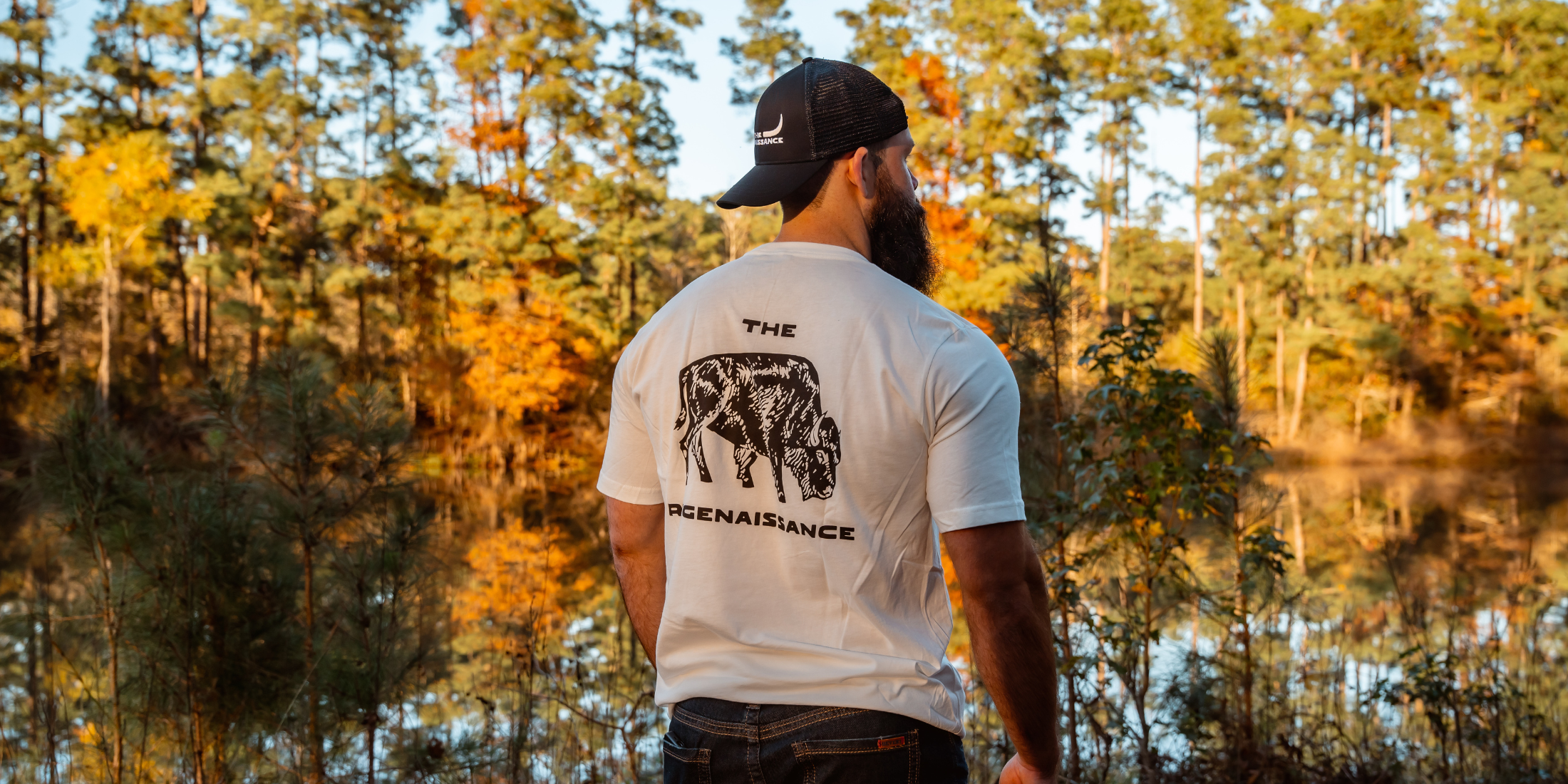Across Southeast Texas, farmers are rewriting the rules of flood control. While engineers continue to build levees and dams to manage stormwater, a quieter solution is taking root in the soil itself. Regenerative agriculture, with practices like cover cropping, rotational grazing, and reduced tillage, is showing that healthy soil can outperform billion-dollar infrastructure when it comes to holding back floods.
The implications go far beyond rural communities. As storms intensify with climate change, cities like Houston and small towns across the Hill Country are realizing that traditional flood infrastructure is failing. The question is no longer whether regenerative farming can improve water infiltration; the science is settled. The real question is whether policy and investment will catch up.
What the Science Shows: Soil as Infrastructure
Healthy soil is more than dirt; it is a living sponge.
-
USDA studies show rotationally grazed pastures can absorb rainfall fifty times faster than conventionally tilled fields.
-
Texas A&M research found adaptive grazing cut surface runoff by 49 percent and increased water infiltration by 29 percent.
-
In Harris County, flood control officials reported that just two acres of native prairie can offset the stormwater runoff from one acre of suburban development.
These numbers translate into real-world resilience. During Hurricane Harvey in 2017, Laughing Frog Farm near Houston absorbed over fifty inches of rain without flooding, while a neighboring test plot under conventional management was submerged waist-deep.
“Our soil has an excellent structure for capturing and holding water,” says farmer Glen Miracle, who has spent 16 years building organic matter on his land.
Farmers on the Frontlines: Case Studies from Texas
Laughing Frog Farm: Proof in a Deluge
When Hurricane Harvey dropped unprecedented rainfall, this regenerative farm’s soil absorbed the storm like a sponge. Miracle’s years of cover cropping and compost application turned his fields into flood buffers while nearby land became a temporary lake.
Chris Grotegut’s Panhandle Ranch
In North Texas, rancher Chris Grotegut converted cropland back to native grasses. While wells on neighboring farms dropped a foot during a storm, his wells rose by a foot each day, capturing roughly 1.5 million gallons of rainwater daily.
Robert Nantz’s Stock Tanks
Another rancher, Robert Nantz, noted that his ponds no longer fill during storms because the water soaks into the soil first and then gradually refills the tanks from below. In his words: “The land absorbed the heavy rain… and then it filled up from the bottom.”
These on-the-ground stories illustrate a consistent pattern: regenerative systems reduce flood risk while replenishing groundwater.
The Infrastructure Gap: Levees versus Living Soil
Texas, like much of the United States, has relied heavily on the Army Corps of Engineers’ dams and levees. However, cracks are showing in this approach.
-
In 2017, Houston’s Addicks and Barker reservoirs failed upstream neighborhoods for the first time in history.
-
FEMA admits that 58 percent of U.S. flood maps are outdated or inaccurate, leaving communities underprepared.
-
Billions are funneled into concrete solutions while soil-based approaches remain underfunded.
This creates a rural-urban divide. Cities may get reservoirs, while farmers, whose land could prevent downstream flooding, are largely left out of planning and funding.
Policy Failures Holding Back Resilience
Despite mounting evidence, regenerative practices are rarely included in state flood mitigation plans. In 2025, Texas legislators allocated billions for water infrastructure and tax breaks, but almost nothing for on-farm floodproofing.
Experts warn this bias repeats at every level:
-
Crop insurance favors monocultures over cover crops.
-
USDA programs often discourage practices that improve soil health.
-
Conservation funding is dwarfed by subsidies for industrial agriculture.
The result is clear. Farmers who want to build resilience often must do it on their own dime, even though their efforts protect entire communities.
Climate Change and the Texas Flood Future
Texas is experiencing more extreme weather events: longer droughts punctuated by sudden, intense floods. This “whiplash” is especially destructive for rural areas with little backup infrastructure.
Healthy soils offer a rare dual benefit:
-
Flood mitigation: absorbing stormwater and reducing flash floods.
-
Drought resilience: storing water underground for dry months.
As Judith McGeary of the Farm and Ranch Freedom Alliance notes:
“Healthy soils with good structure and infiltration rates allow water to enter the soil more easily, rather than flowing over the surface as runoff.”
Regenerative Agriculture as Climate Infrastructure
If framed correctly, regenerative agriculture could be recognized as natural infrastructure on par with levees, reservoirs, and stormwater systems. Some municipalities are beginning to explore payments for ecosystem services, rewarding farmers for the flood protection they provide.
For Texas, this shift could mean billions in avoided costs. A study of the Katy Prairie estimated that wetlands and soils there saved Houston hundreds of millions of dollars in stormwater infrastructure. Scaling this approach could reshape flood policy across the state.
Barriers to Adoption
Despite the clear benefits, several barriers remain:
-
Financial risk: Transitioning to regenerative practices requires upfront investment.
-
Policy bias: Federal programs often penalize diversification and cover cropping.
-
Awareness gap: Many urban policymakers still view farming and flood control as separate issues.
-
Market forces: Industrial agriculture incentives push farmers toward short-term yields over long-term resilience.
Overcoming these obstacles will require coordinated advocacy from farmers, scientists, and community groups.
FAQs: Regenerative Agriculture and Flood Control
Q: What is regenerative agriculture?
A: It is a set of farming practices, such as cover crops, reduced tillage, and rotational grazing, that restore soil health, biodiversity, and water cycles.
Q: How does regenerative agriculture help with floods?
A: Healthy soils act like sponges, rapidly absorbing rainfall and reducing runoff that causes flash floods.
Q: Can regenerative agriculture replace levees and dams?
A: Not entirely. However, it can significantly reduce flood pressure, complement traditional infrastructure, and save costs.
Q: Is regenerative agriculture only for small farms?
A: No. While many examples come from small farms, larger operations can also integrate regenerative practices at scale.
Q: What policies could support regenerative flood control?
A: Updating crop insurance rules, funding soil health programs, and recognizing regenerative farms as infrastructure providers.
Feeding the Soil, Protecting the State
The evidence is mounting that regenerative agriculture is more than a buzzword; it is a survival strategy. By absorbing water during storms and storing it for dry times, healthy soils protect both farms and cities. Yet funding and policy lag far behind science.
Texas’s future will depend on whether it continues to invest in concrete fixes or begins to recognize the value of living soil. For now, farmers are leading the way, proving that sovereignty over water and land starts with the ground beneath our feet.
Every acre of living soil is a step toward climate resilience and food sovereignty. At The Regenaissance, we believe stories like these should not sit behind paywalls. Paid subscriptions do not unlock content; they unlock possibility. Join us to fund more reporting, elevate more farmer voices, and build a future where soil is stronger than storms. Join the Rebel newsroom today →





